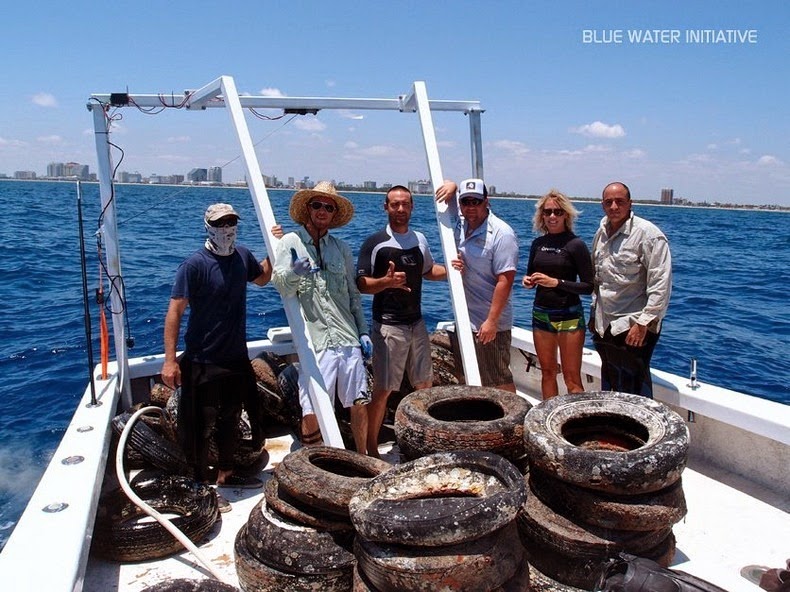About 7,000 feet offshore of Sunrise Boulevard off the coast of Fort Lauderdale, Florida, lies an underwater wasteland of rotting tires. This is Osborne Reef, an underwater cemetery of 2 million tires that were placed there in the 1970s as a part of a failed ecological operation to create an artificial reef. Over the years, many of the tires were dislodged by tropical storms and hurricanes and caused damage to nearby existing coral reefs. Forty years later, the tires are still there causing more harm than good in the coastal Florida waters.
Osborn Reef was the brainchild of a non-profit group called Broward Artificial Reef, or BARINC, composed of a group of fishermen, back in the spring of 1972. The idea was to create a reef using old tires that were piling up around the county's landfills and rural areas. This was before recycling caught on. They were convinced that corals would attach and grow on the tires and provide additional habitat for marine life. It was a well intentioned but not a particularly well thought out plan.

Photo credit: Mikkel Pitzner, Project Baseline Gulfstream
With the support of US Army Corps of Engineers and more than 100 privately owned vessels, placement of the tires began over 36 acres of the ocean floor, 7,000 feet offshore in 65 feet of water. The Goodyear Tire and Rubber Company provided equipment for the auspicious undertaking, even supporting the project so far as to drop a gold-painted tire to christen the site. The tires were bundled together with steel clips and nylon rope and lowered onto the sea floor. However, the saline waters of the ocean quickly corroded these materials causing the tires to separate, and carried them away by ocean currents and waves. The tires, with their newfound mobility, not only destroyed any marine life that had thus far grown on the tires, it effectively prevented the growth of any new organisms. Besides, the loose tires scoured the ocean floor and damaged existing reefs in the area. Thousands of tires have been spotted and pulled from beaches as far north as North Carolina.
Since 2001, several organizations have attempted to undertake the removal of the tires, but the costs associated with such a project are staggering. In 2007, after several false starts, the United States military took active role using the cleanup process for diving and rescue training purposes, thus saving significant costs to the state. As of 2009, only 73,000 tires were retrieved. Out of the original 2 million, about 700,000 still rest off Fort Lauderdale's coast.
This project is not the only one of its kind. Similar reefs have been constructed in the Northeastern United States, the neighboring Gulf of Mexico, Indonesia, Malaysia, Australia and Africa. These countries are now seeing the ramifications of tire reefs, from littered beaches to reef destruction. According to the Ocean Conservancy's International Coastal Cleanup, some 11,956 tires were removed from beaches all over the world.

Photo credit: Mikkel Pitzner, Project Baseline Gulfstream

Barge used to deploy discarded tires in building the Osborne Tire Reef off the coast of Fort Lauderdale Florida. Photo credit

Tires bundled up before deployment. Photo credit

Photo credit: Mikkel Pitzner, Project Baseline Gulfstream

Photo credit: Mikkel Pitzner, Project Baseline Gulfstream

Photo credit: Mikkel Pitzner, Project Baseline Gulfstream

Members of the Blue Water Initiative, a South Florida based nonprofit marine conservation organization, poses with tires recovered from Florida waters. Photo credit
Sources: Wikipedia / Project Baseline / Sun Sentinel.